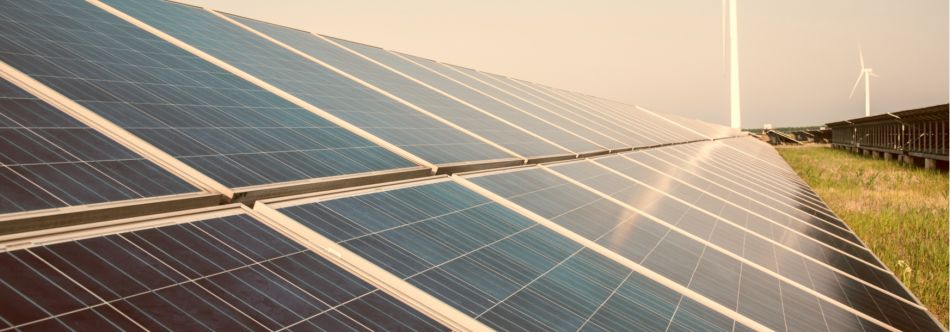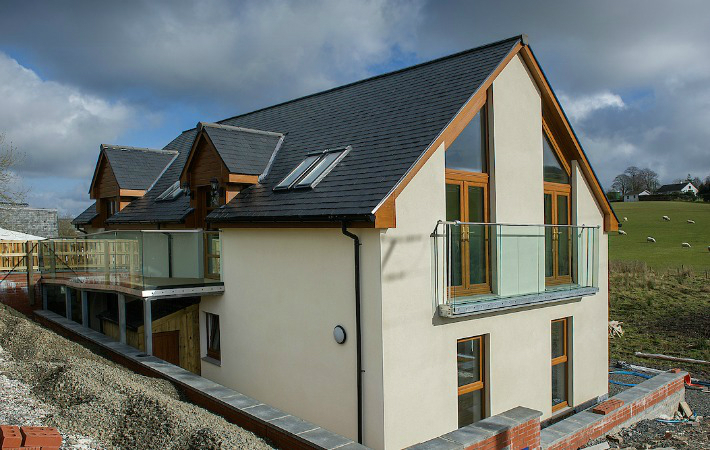The CA who built an eco-house

Jamie Davidson CA, Associate Director at Johnston Carmichael Chartered Accountants, speaks to Andrew Harbison about building an eco-house that was 38 years in the making.
Nestled in the rolling hills of the Ayrshire countryside sits a stylish yet unassuming house.
However, the building’s architecture and the materials used in its construction were not selected merely for aesthetic purposes. This is a one-and-a-half storey, upside down, eco-house.
“I think the seed was planted in 1992 during a trip to Canada,” said Jamie Davidson CA, builder and owner of the house.
“I was told to take the rubbish out, but there was no black bag”.
After it was explained to Jamie that there were five different bins to separate out glass, plastics, paper and so on, he realised that recycling “was still quite unusual in the UK at the time.”
The idea of the house was further cemented in Jamie’s mind during a dinner party, when his father started to discuss a plot of land which had been in his family since 1979.
“My dad announced to his friends that I was going to build a house on the land, specifically an eco-house.”
Jamie said his father became an “Eco-warrior” during his time at a waste management company.
“My dad was asked to write a paper on future opportunities for the company. He identified that the amount of waste going to landfill was unsustainable and that recycling represented a sustainable business model.
“Unfortunately, the report was dismissed. But after writing it he became a bit of an Eco-warrior and encouraged me to make my house as eco as possible.”
Giving back to the community
After finishing university and qualifying as a CA, Jamie travelled to the Philippines with friends to build five houses with the Philippine Community Fund – a charity that works to tackle poverty and end child labour.
During the two weeks spent building the houses in the slums of Manila, Jamie and his friends noticed that when the children of the shanty town would leave for school each day one boy was left behind.
“We asked our translator why he wasn’t joining the others. It turned out that he didn’t have a birth certificate so he couldn’t attend.”
The group decided to pay for the correct paperwork to let the boy start learning. They continue to sponsor him today.
The build begins
Once he returned from the Philippines, Jamie was even more determined to start his eco project.
“I was working for an accountancy firm on renewable energy projects. I was involved in many windfarm, solar, anaerobic digestion and hydro developments so I was able to speak to people in the sector and became more aware of what I could use in the house.”
It was during one of these conversations that Jamie discovered that, although they help, he didn’t need fields of solar panels and wind turbines to make his house “eco”, it was all in the materials.
“I spoke to a guy who built an eco-house in the 80s and asked him how he managed it without the technology we have now.
“He said ‘The key to an eco-house is the insulation. If you’re not losing heat, you don’t need to generate it.’”
After this revelation, Jamie went back to the drawing board, swapped all the windows to triple glazing and increased the amount and quality of the insulation, which put the house 5 to 10 years ahead of current building regulations.

Once he decided how he wanted to keep heat inside the house, Jamie now had to find a sustainable source for that heat.
He settled on a ground-sourced heat pump which uses pipes buried deep underground to extract heat from the earth and a heat recovery system.
“I had the company that does the spring water drilling at Gleneagles drill me two boreholes which are 131 metres deep.
“The system supplies the house with hot water and runs the underfloor heating.”
Not one to shy away from getting his hands dirty, Jamie completed most of the building work himself with some help from family and friends.
“My idea of a self-build was that I would be doing most of the work, everything that I can.
“I had a contractor for foundations and the retaining wall, the timber frame, the slate work and the brickwork, but the construction was done by me, my dad, my uncle who’s a joiner, and some other family friends.”
Most of the furniture that sits in the house is also recycled, having been donated to Jamie by family and friends.
Alongside his consideration for the health of the planet, Jamie also took his family’s physical and mental health into account, building an outdoor gym complete with monkey bars, a devils staircase, a warped wall, dip bars and a high bar.
“Having that gym just outside the house was a huge benefit for us during lockdown and gave a much-needed boost to both our physical and mental fitness,” Jamie said.
So, what’s next?
Is there another eco-house build on the horizon?
“If I was to have another life, I would do it again,” laughs Jamie. “This was always going to be a one-off project and there are certain favours in life that you can only call in once.”
For Jamie, the achievement of building his own eco-house is enough.
